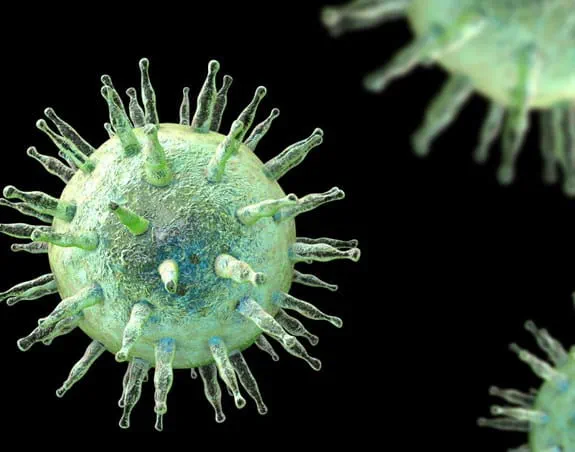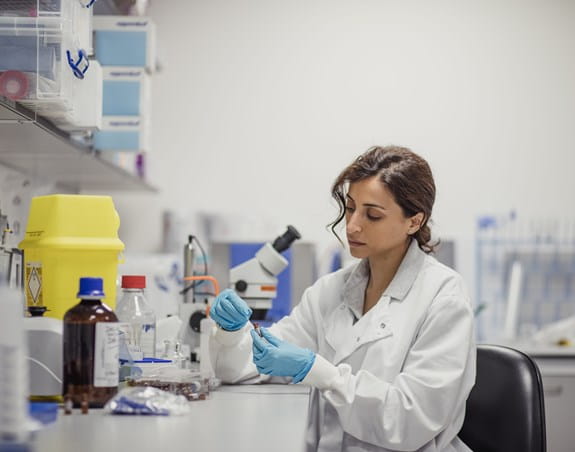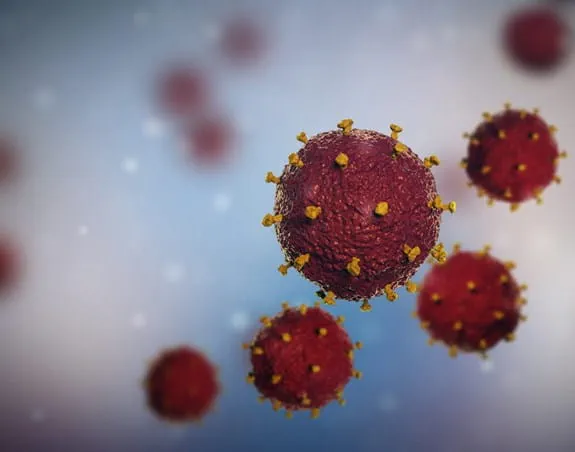Other viruses you should know about

Epstein-Barr virus (EBV)
Infection with EBV usually happens in childhood. Most people develop only mild symptoms or none at all. Symptoms of mono include fever, sore throat and swollen lymph nodes.
EBV stays in the body throughout life, though most people do not have any symptoms after the first few weeks of infection.

EBV and cancer
In some cases, long-term infection with EBV increases the risk of developing some types of cancer, including:
- some types of non-Hodgkin lymphoma
- Hodgkin lymphoma
- throat (nasopharyngeal) cancer
- some types of stomach cancer

Human herpes virus 8 (HHV8)
HHV8 infection is not very common in North America. It occurs more often in some Mediterranean countries and is widespread in Africa.
HHV8 is related to other herpes viruses that cause cold sores, mononucleosis and chicken pox. Although HHV8 remains in the body after infection, the immune system usually keeps the virus under control. Most people with HHV8 infection don’t have symptoms.

HHV8 and cancer
How to reduce your risk

Human immunodeficiency virus (HIV)

HIV infection and cancer
HIV does not appear to cause cancers directly. HIV infection weakens the immune system, making it harder for the body to fight infections and diseases. This can contribute to developing cancer. Also, people infected with HIV may have a higher risk of some cancers compared to the general population. This is partly because of the higher incidence of other risk factors, such as smoking, alcohol use and infection with other cancer-causing viruses like HHV8 and HPV.
HIV infection increases the risk of:
- Kaposi sarcoma
- anal cancer
- certain types of non-Hodgkin lymphoma
- Hodgkin lymphoma
- cervical cancer
- cancer of the conjunctiva (a thin membrane that lines the inner surface of the eyelids and the outer surface of the eye)
HIV can spread from an infected person to someone else by:
- having unprotected sex (oral, vaginal or anal)
- sharing needles, syringes or other equipment for injecting drugs
- an infected mother to a child during pregnancy, at birth or through breastfeeding
- a sharp equipment injury or accidental needle stick while healthcare workers care for someone with HIV infection
- getting donated blood or an organ transplant
Canadian Blood Services tests every blood donation for HIV. Only blood that does not contain this virus is used, so the risk of getting an HIV infection through a blood transfusion is very low. Organ donors are also tested for HIV.
HIV is not spread by casual contact, such as talking, shaking hands, hugging, coughing or sneezing.
If you think you’re at risk for HIV infection or have been exposed to HIV, talk to your healthcare provider about getting tested. A blood test is usually done to see if you have been exposed to the virus.
If you are pregnant and concerned about HIV, talk to your doctor about being tested. Early treatment with medication can prevent HIV from being spread from a mother to her baby before birth.
How to reduce your risk
Don’t share needles or other drug-use equipment. If you inject drugs, take part in a needle exchange program.
Don’t share personal care articles, such as razors, scissors, nail clippers or toothbrushes, with an infected person.
Wear latex gloves whenever you might come into contact with someone else’s blood or body fluids.

Human T-cell leukemia/lymphoma virus (HTLV)
HTLV is similar to HIV, another virus, but HTLV doesn’t cause AIDS. The type of HTLV related to cancer is human T-cell leukemia/lymphoma virus type 1 (HTLV-1).
Once infected with HTLV-1, a person has the infection for life. There is no treatment to get rid of the virus once you are infected. In many cases the virus does not cause symptoms or health problems.

HTLV-1 and cancer
HTLV-1 can cause an uncommon type of T-cell lymphocytic leukemia and non-Hodgkin lymphoma in adults called adult T-cell leukemia/lymphoma (ATLL). This cancer is not common in Canada and occurs mostly in Japan and the Caribbean.
People who carry HTLV-1 have a 2% to 4% lifetime risk of developing ATLL. It often takes a very long time before the person infected with the virus develops ATLL. However, only a few people who have HTLV-1 will develop ATLL.
HTLV-1 is spread in much the same way as HIV. Not everyone exposed to HTLV-1 becomes infected. It can be spread from a person infected with HTLV-1 to someone else by:
- having unprotected sex
- sharing needles, syringes or other equipment for injecting drugs
- a transfusion with contaminated blood or blood products
- an infected mother to a child during birth or through breastfeeding
Canadian Blood Services tests every blood donation for HTLV-1, so the risk of getting an HTLV-1 infection through a blood transfusion is very low. Mothers infected with HTLV-1 have a 10% to 30% chance of passing the virus on to their children. The risk is reduced if the mother doesn’t breastfeed.
